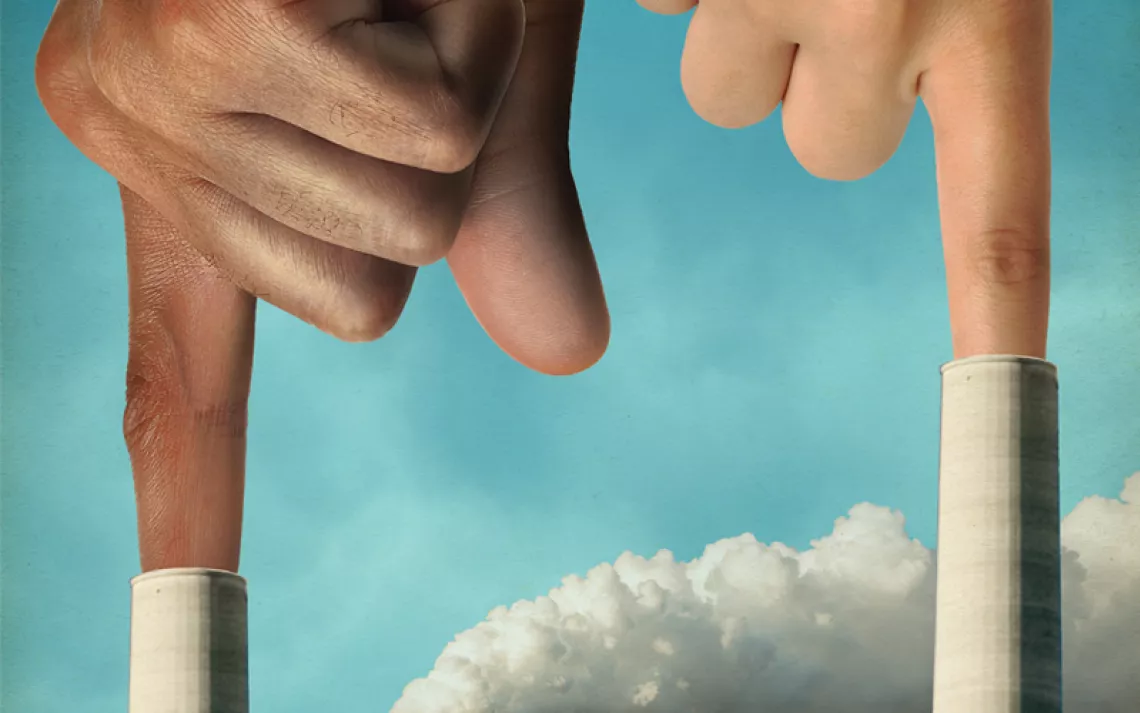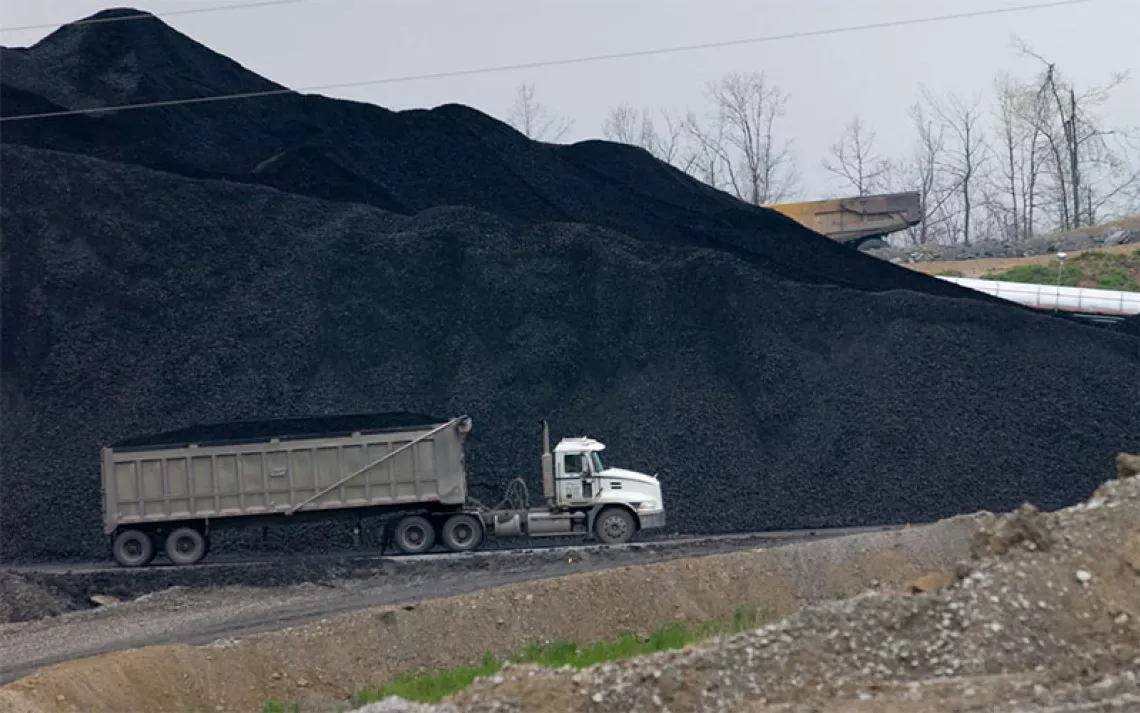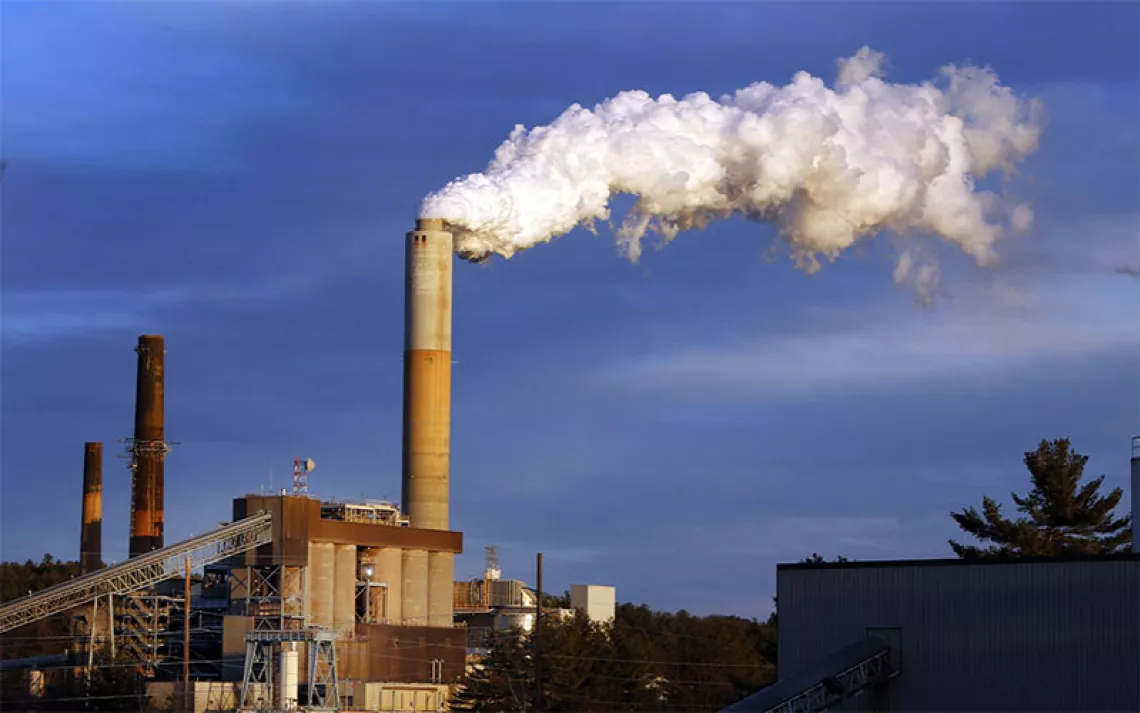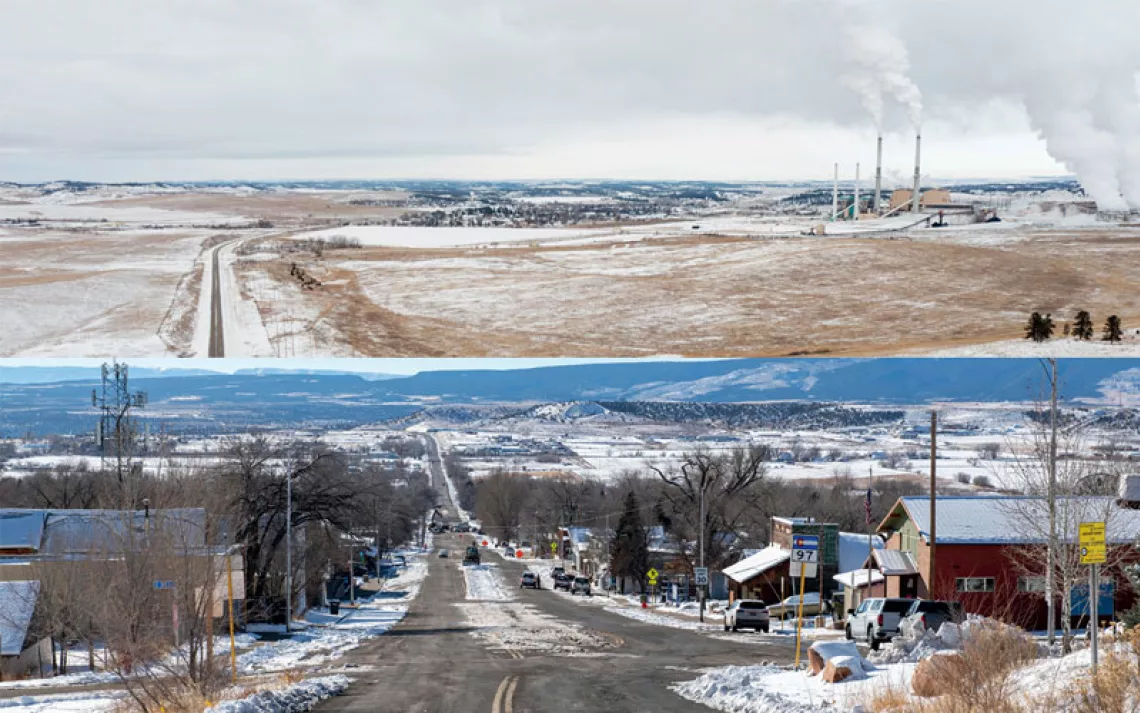The Sierra Club’s Shadowy History With the Navajo Generating Station
Organization now committed to principles that uphold local community leadership

Photo by GaryKavanagh/iStock
When, in 2009, the Sierra Club launched a campaign pressing for the closure of the Navajo Generating Station, a massive power plant in the Four Corners region, the move seemed in line with the organization’s new priorities in the age of climate change. The Club’s Beyond Coal campaign was beginning to hit its stride in halting or retiring coal-burning power plants nationwide, and the Navajo Generating Station, the largest coal plant west of the Mississippi River and the seventh-largest source of carbon pollution in the United States, was a natural target.
While the Sierra Club had been working with Navajo and Hopi community leaders over many decades on a variety of issues, there had not been a clearing of the air about the organization’s history regarding the Navajo Generating Station. As the advocacy targeting the plant intensified, tribal activists rightly called for an airing of that history to ensure that the Sierra Club did not repeat past mistakes. The Sierra Club’s 1960s-era leadership, some Navajo activists said, had at minimum made public statements downplaying the dangers of coal, and, at worst, had been involved in a backroom deal to build the plant and its accompanying coal strip mine. At the very least, the Sierra Club needed to take responsibility for the way in which it had undercut indigenous people in its drive to preserve iconic landscapes.
With the Navajo Generating Station now on the verge of closing, this is a good time to step back and review the Sierra Club’s long, twisted history with the coal mines and power plants located on and near the Navajo Nation. In doing so, we can see how the environmental movement has frequently excluded, erased, and marginalized indigenous peoples and their struggles as it has sought to keep landscapes free of industrial exploitation. Such an acknowledgement of our shadowed history can free us to have perspective about ourselves and to commit ourselves to do our work in a way that honors both the interconnection of all people and the interconnections of the natural world. By taking responsibility for the mistakes of the past, such an acknowledgement can empower us to act more justly in the future
The story begins like this: In the early to mid-1960s, the Sierra Club spearheaded a national campaign to prevent construction of two hydroelectric dams in the Grand Canyon. For the Arizona political elite and the federal Bureau of Reclamation, the proposed dams would be the keystone of the Central Arizona Project—a massive infrastructure scheme to enrich agricultural and development interests by getting water and electricity to the booming cities of Phoenix and Tucson. For the Sierra Club and others, the dams represented a desecration of one of the world’s most incredible natural wonders. The Sierra Club, led at the time by crusading conservationist David Brower, organized an unprecedented campaign to stop the dams’ construction. The organization placed full-page advocacy ads in newspapers (“Should We Also Flood the Sistine Chapel So Tourists Can Get Nearer the Ceiling?” one famous ad read), mobilized people to contact their members of Congress, and engaged in a sophisticated strategy of lobbying federal officials.
The campaign to stop the dams was a success. In 1966, the Feds backed down from their plans for dam construction in the Grand Canyon. At the same time, the victory invigorated the conservation movement and in many ways built the modern Sierra Club. But while the fight to protect the Grand Canyon as envisioned by David Brower and other white environmentalists was a noble one, it came from a privileged perspective and did not include the voices of everyone impacted—namely, the voices of local tribal communities whose homeland, culture, and livelihoods were at stake.
Having protected the Grand Canyon (and, in the process, partially redeemed the loss of the Glen Canyon), the Sierra Club chose not to engage, in a timely way, in solidarity with the tribal communities who soon found themselves in the crosshairs of coal development. And the Sierra Club’s leadership made comments publicly and privately that at least facilitated the coal mining and coal burning that soon descended on Black Mesa, a place held sacred by both the Hopi and Navajo Nations.
According to Navajo activist leader John Redhouse, who in the late 1960s was a field organizer with the National Indian Youth Council, the Sierra Club’s Brower worked behind closed doors with then–Interior Secretary Stewart Udall and influential congressman Morris Udall of Arizona (the two were brothers) “to come up with the infamous Plan B Alternative to the proposed Grand Canyon hydroelectric dams.” Instead of being sustained by hydroelectric energy from dams, the Central Arizona Project would be fueled by coal mined and burned on Navajo lands. Redhouse writes: “And so Black Mesa, our sacred female mountain and physical and spiritual embodiment of our most beloved Mother Earth, and the sweet female ground waters of the holy Navajo Aquifer, were brutally mined and depleted.”
Some of Brower’s contemporaries have disputed this account, arguing that the coal plants were already being planned by private utilities. But in the recent biography of David Brower, The Man Who Built the Sierra Club, journalist Robert Wyss reports that during congressional hearings in May 1967, Morris Udall forced Brower to look at photos of stripmining operations and asked if that kind of damage was preferable to a dam. Brower’s thought was, “Well, that is not very important country compared to Grand Canyon.”
Not important to Brower, perhaps, but certainly it was important country to the Navajo and Hopi people who had called Black Mesa home since time immemorial. Yet they were not asked.
Even if the Sierra Club didn’t directly support the coal operations on Black Mesa (“We don’t like stripmining any better than you do,” Brower told Morris Udall, in Wyss’s account), neither did the organization strongly oppose them. The Sierra Club failed to invest in and support local tribal activists, or to launch its own campaigning on the scale of the Save the Grand Canyon effort.
That failure stemmed from a privileged place of ignorance about the history and culture of the region’s indigenous peoples, as well as an ignorance about the extent to which the coal operations would destroy the local ecosystems and thus the lifeways of the people living there. The Sierra Club of the time had no urgent sense of responsibility to understand or even consider the broader context within which it was acting to preserve the Grand Canyon. The organization’s leadership lacked a principled analysis for what it should have done during and after the anti-dams campaign. While it may have proved impossible to stop both the dams and the coal plant and mine complex, such a fight would have helped to push back on the “development at any cost” frenzy of the era and would have upheld the leadership of local indigenous people to chart their own lives.
According to Mike McCloskey, who succeeded Brower as the Sierra Club’s executive director, Brower eventually “came to regret all of these compromises.” And the organization as a whole also seemed to soon understand that it had made a mistake in not fighting the coal operations on the Navajo Nation.
In August 1970, the Sierra Club Bulletin (the forerunner of this publication) published an impassioned reported essay titled “The Rape of Black Mesa.” William Brown, a former environmental specialist with the National Park Service, wrote
Why were Dot Klish Canyon and the rest of Black Mesa and the people who live there chosen for sacrifice? Hanging from this question is a tale of environmental tragedy. It is a tale of the industrial octopus, created by the insatiable demands of its customers, reaching into remote places and tearing them apart. This is the hidden story of environmental destruction.
By the early 1970s, the Sierra Club’s organizer in the Southwest was watchdogging the emerging complex of coal power plants in the region and regularly writing dispatches criticizing how the area had become “the utility backyard for southwestern metropolitan areas.” And in 1971, the Sierra Club—along with the New Mexico attorney general and the Jicarilla Apache Tribe—filed a lawsuit against the owners of the Four Corners power plant in Farmington, New Mexico, arguing that it was in violation of the Clean Air Act. (More than 40 years later, that plant is also on the path to shutting down; two of the plant’s owners are planning to exit the plant by 2031.)
But it was too little, too late. And, in any case, the Sierra Club’s leadership still was not prepared for (or interested in) engaging with Native American activist leaders as equals. In his memoir, McCloskey, who was Sierra Club executive director from 1969 to 1985, wrote of that time, “While the Sierra Club was aware of the natives’ feelings . . . it was not ready to surrender its judgement.” Which is to say, the organization was not yet ready to let go of its position of privilege. The organization excluded communities whose voices needed to be heard.
John Redhouse’s words were an important public reminder to the organization that working in authentic support of tribal community interests demands clarity about previous errors and a commitment to, as Redhouse described it in a later post, “a true and equal partnership between the Sierra Club and indigenous NGOs.”
Today, we hope to find the right balance and role for the Sierra Club to help amplify Native American voices while also learning from the mistakes of our past. The Sierra Club is now incorporating principles that uphold local community leadership and that demand a more holistic analysis of both environmental challenges and their solutions. We strive for just and equitable outcomes for people as part of our work to address climate disruption, end pollution, and defend the land, water, and living beings that nourish us, body and soul.
Doing that work authentically is a daily struggle; it brings new orders of complexity, compared to how we advocated and organized in previous eras. That struggle, however, is small when compared to the struggles of the indigenous people who have sought to protect their traditional lands and ways of life on Black Mesa and elsewhere. People were displaced, homes destroyed, and lives forever altered in the process of securing the coal that drove so much of the wealth creation of the now-vast Southwestern metropolises.
In the wake of that history, the Sierra Club now approaches its work with greater humility. The organization is committed to better understanding the ways in which we can help undo (and not contribute to) systemic oppression and the impacts it has on those most marginalized. We seek to support, when invited to do so, the work of Native American activists as they seek to heal the land and fight for a future free from the toxins of fossil fuels and the toxins of colonizing exploitation.
Nellis Kennedy-Howard and Jason Mark contributed reporting.
 The Magazine of The Sierra Club
The Magazine of The Sierra Club



